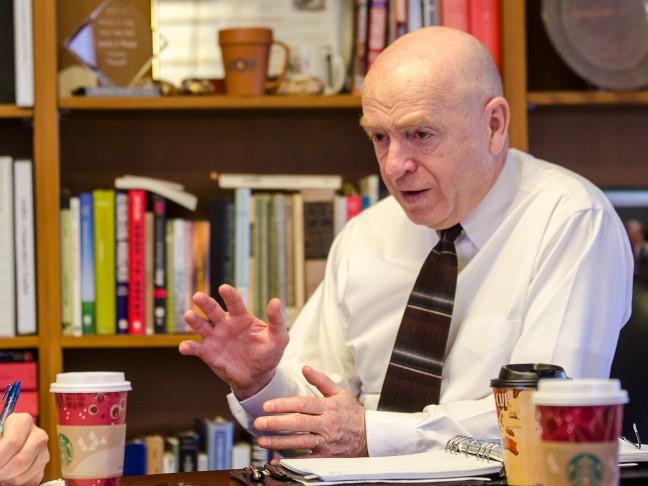Eight times a year, 18 individuals meet to deliberate the inner-workings of the University of Wisconsin System. They form the Board of Regents.
The Board of Regents might see an increase in power if Gov. Scott Walker’s proposal in the biennial budget to make the UW System a public authority goes through. But for many, the board’s responsibilities and composition is not well known.
The Board of Regents is the UW System’s governing body. According to the UW System website, the regents are responsible for establishing policies, planning to meet state needs for collegiate education, setting admissions standards, reviewing and approving university budgets and establishing regulatory framework for individual campuses.
The regents are made up of 16 governor-appointed positions and two non-appointed positions, the state superintendent of public instruction, currently Tony Evers, and the president of the Wisconsin Technical College System Board, currently Drew Petersen.
Non-student regents serve seven-year, staggered terms, meaning the current governor appoints new regents every few years when the seven-year terms expire. Different governors appointed the mix of regents currently on the board.
The governor appoints two UW System students who sit on the board. The current non-traditional student regent, who represents students over the age of 24 with work or service experiences prior to enrollment, is UW-Madison student and U.S. Marine Corps veteran Nicolas Harsy. The traditional student regent is UW-La Crosse senior Anicka Purath.
Walker appointed both students to the board.
The rest of the board is made up of Wisconsin residents who are not students. They consist mostly of attorneys and are not paid for their work as regents.
Purath said the regents deal with everything having to do with higher education and how the system operates. She said although most regents are attorneys, Regent Janice Mueller is the former State Auditor and gives a finance perspective to discussions.
UW-Madison education professor Nick Hillman said no two states govern their university systems in exactly the same way, but every state has some type of governing body in charge of the state universities. These differences are based on history, politics and capacity of the state, Hillman said. In Virginia, for example, a coordinating committee governs the public universities, which has significantly less power than Wisconsin’s Board of Regents.
Hillman said in Wisconsin, the regents generally play a buffering role between the legislature and the campuses.
“They can be thought of as a liaison between campuses and the legislature,” Hillman said.
Hillman said Wisconsin’s Board of Regents is comprised of a more diverse mix of representatives than most states. In most states, the governing body tends to side either with campuses or with the legislature on most issues, Hillman said.
Hillman said the regents come from a wide variety of political backgrounds because different governors appointed them, some by Walker and some by former Gov. Jim Doyle. Of the 16 governor-appointed positions, Walker appointed 10 members and Doyle appointed six.
“You see a politically mixed group here,” Hillman said.
A previous version of this article stated the Board of Regents meets once a month, The Badger Herald regrets this error.













